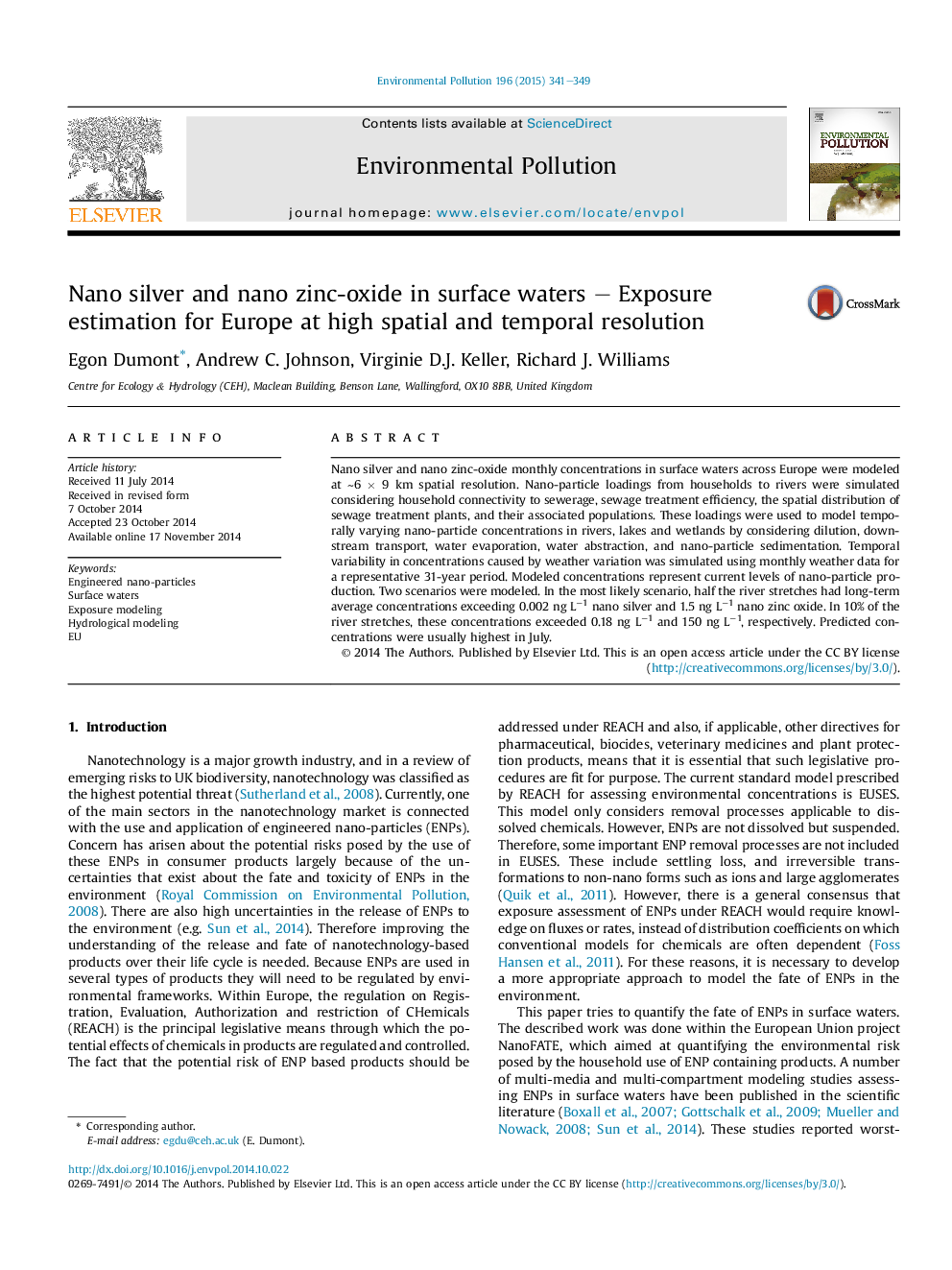| Article ID | Journal | Published Year | Pages | File Type |
|---|---|---|---|---|
| 6317958 | Environmental Pollution | 2015 | 9 Pages |
â¢We modeled nano-particle concentrations in surface waters across Europe.â¢Modeled concentrations are generally highest where population densities are high.â¢Expected levels exceed 0.18 ng Lâ1 nano silver in 10% of the river reaches.â¢Expected levels exceed 150 ng Lâ1 nano zinc oxide in 10% of the river reaches.â¢Modeled concentrations are usually highest during the months June, July or August.
Nano silver and nano zinc-oxide monthly concentrations in surface waters across Europe were modeled at â¼6 Ã 9 km spatial resolution. Nano-particle loadings from households to rivers were simulated considering household connectivity to sewerage, sewage treatment efficiency, the spatial distribution of sewage treatment plants, and their associated populations. These loadings were used to model temporally varying nano-particle concentrations in rivers, lakes and wetlands by considering dilution, downstream transport, water evaporation, water abstraction, and nano-particle sedimentation. Temporal variability in concentrations caused by weather variation was simulated using monthly weather data for a representative 31-year period. Modeled concentrations represent current levels of nano-particle production. Two scenarios were modeled. In the most likely scenario, half the river stretches had long-term average concentrations exceeding 0.002 ng Lâ1 nano silver and 1.5 ng Lâ1 nano zinc oxide. In 10% of the river stretches, these concentrations exceeded 0.18 ng Lâ1 and 150 ng Lâ1, respectively. Predicted concentrations were usually highest in July.
